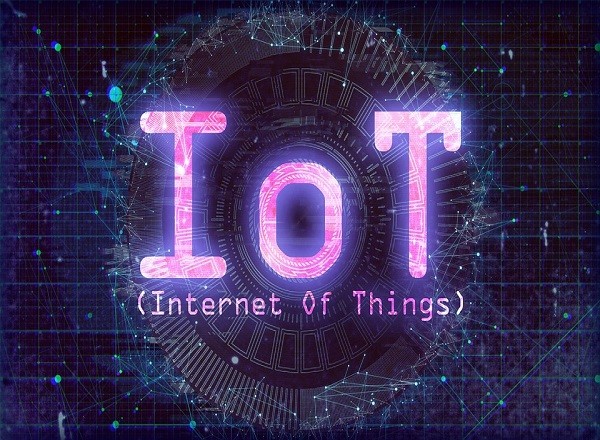With IIoT being the centerpiece for most of the industry analysis and future economic predicaments. It is very necessary to know its applications over different spans of manufacturing automation. Also, weigh the benefits through these applications and side effects if any.
Connected Manufacturing Units
In the past two decades, automation has been all about controlling the whole manufacturing plant or unit through a central control room. But wouldn’t it be amazing if it could be controlled kilometers away from the plant. The IoT enabled machinery can transmit information like operational parameters and machine health condition to the control operators and field engineers. This will not only help to take advantage of process automation and optimisation but the operation managers and factory heads could remotely manage the factory units. Along with this, a digitally connected unit will discretely segregate the processes and will establish a better line of commands and help identify the areas to maximise production.
This will not only reduce costs and support production output but also contribute to the safer working environment. Digitising will open up doors for enhanced automation options using analytics and predictive models
Facility management
The embedded IoT sensors in manufacturing instruments and machinery enable condition-based monitoring facilities. Many critical operation machines and tools can work only under certain temperature and vibration ranges. IoT sensors embedded with such machines can monitor their conditions and raise an alert when the parameters deviate from the prescribed range. By maintaining the prescribed parameter for the machinery and tools on the factory floor the manufacturers can avoid accidental breakdowns and untimely shutdowns which decrease productivity.
This has also given birth to the new concept of dark room manufacturing in which the factory floor has no worker on it and all the lights are switch off. They are lit up only when someone comes on the floor for regular maintenance or repair work.
Production flow monitoring
IoT enabled manufacturing environments to provide for monitoring of production lines starting from the refining process to packaging of final products. The real-time monitoring of the process leaves the scope of adjustment in operations and recommend adjustments in automation systems. The minute monitoring highlights the generally neglected lags and thus eliminates any possibility of any kind of wastes and unnecessary work in progress inventory.
Inventory management
With the application of IoT the monitoring of events across a supply chain is easy. Use of such systems makes it possible to track the inventory and avoid wastage. The online consumption regulation could also be done if IoT sensors are in place. This provides for a line item level tracking and cross-channel visibility into the inventory deposits.
The process managers are made available with realistic estimates of the quantity of material available. This helps them to take informed decision regarding supply quotation and predict orders for a longer period. All of this accounts for a large amount of saving not only for the firm but also reduces global wastage.
Plant safety and security
All the data from IoT sensors, when combined with big data analytics, can improve the overall safety and security in the plant. Also with the option of monitoring the Key Performance Indicators (KPIs) of workers through wearable sensors could help a lot in this process.
The major areas to watch in this could be the number of injuries and illness rates, near-misses, short- and long-term absences, vehicle incidents and property damage or loss during daily operations. Obviously, such effective monitoring will improve overall safety.
Quality control
The IoT sensors collect overall product data and other linked data from various stages of a product cycle. This could vary from the composition of raw materials used, temperature to the working environment, wastes, the impact of transportation etc. on the final products. This if used in the final product, it can provide data about the customer feedbacks on using the product. All of these inputs can linearly analysed to identify and improve quality issues.
Packaging optimisation
With the help of IoT sensors in products packaging process, manufacturers can gain insights into the usage patterns and handling of product over the multiple stages. Intelligent tracking systems can also look for product deterioration during transit and impact of weather, road and other environment variables on the product. This will offer insights that can be used to re-engineer products and packaging for better performance in both customer experience and cost of packaging.
Logistics and supply chain optimisation
The access to real-time supply chain information by Industrial IoT (IIoT) can provide tracking of materials, equipment, and products as they move through the supply chain. Effective reporting enables manufacturers to collect and feed delivery information into ERP, PLM and other systems. The plants connected to suppliers can have a better track over their production to consumption ratio which will decrease interdependency and improve manufacturing cycle times.
This will help manufacturers predict demand, reduce inventory and in turn reduce primary capital requirements.
Digital twins
Digital twins is a modeling technique of the plant or factory in which the digital replica of the whole facility is prepared. The input parameters from various sensors could be induced in this model and a predictive analysis could be done. The biggest USP of this system is that it could include the changes or modification for system betterment and run over for pre-implementation results.
This will not only save a lot of time and money but various versions of modifications could be done to get the most near to perfect model.
Environment hazard analysis
The last block in the IIoT implementation pyramid could be the analysis of environmental effects by the plant or factory. The analysis of data from different instruments of the plant could give us a data of the amount of effluents released during the production process.
The factory or plant owners could not only optimise their effluent treatment systems but could also present this data during environment agencies audits.








